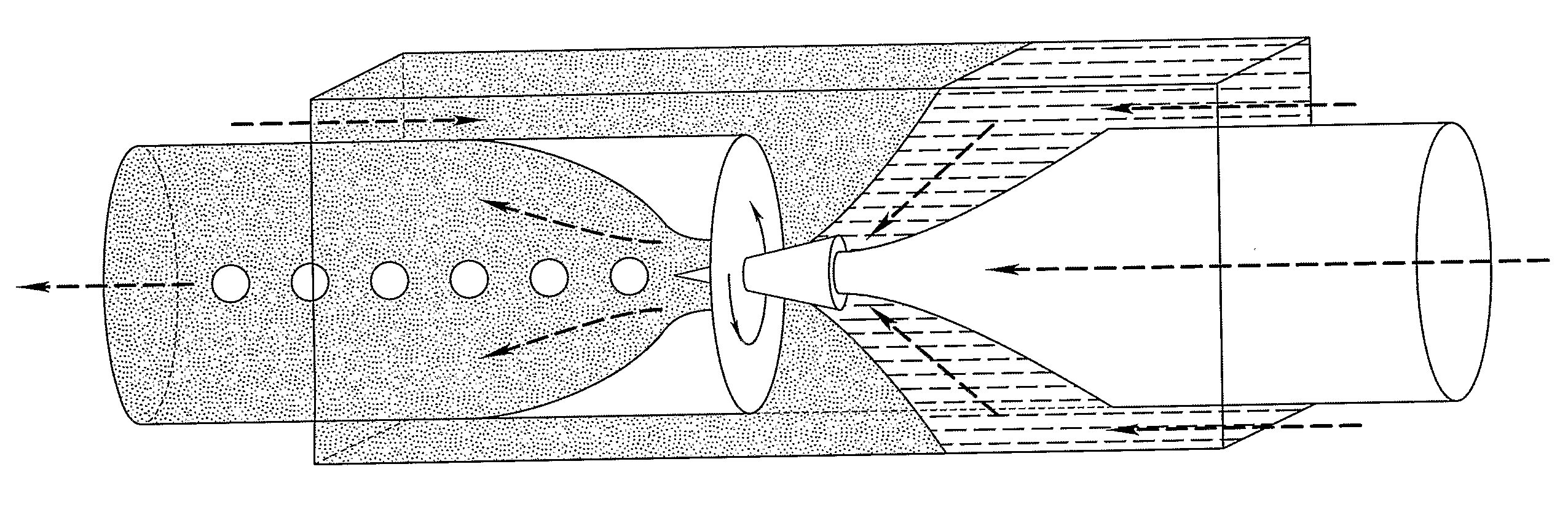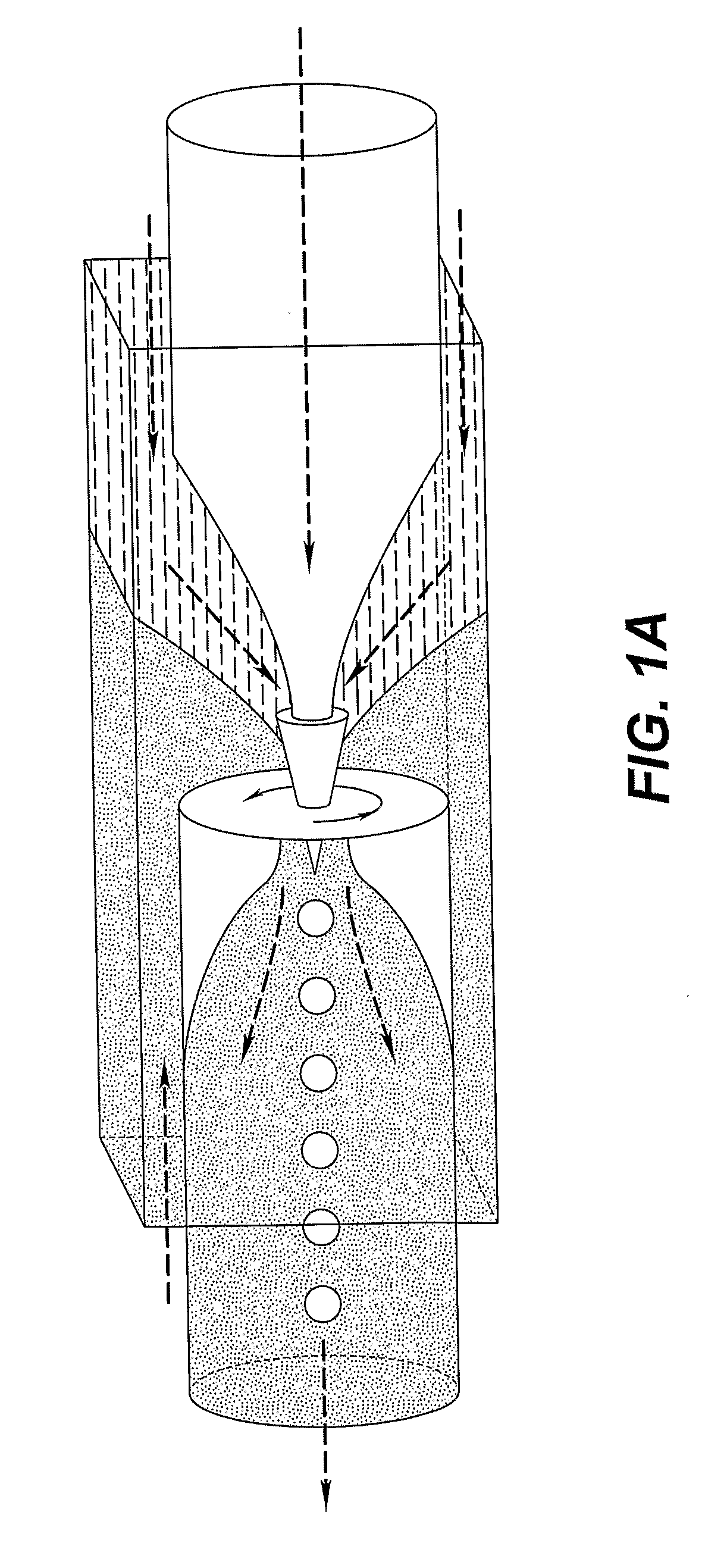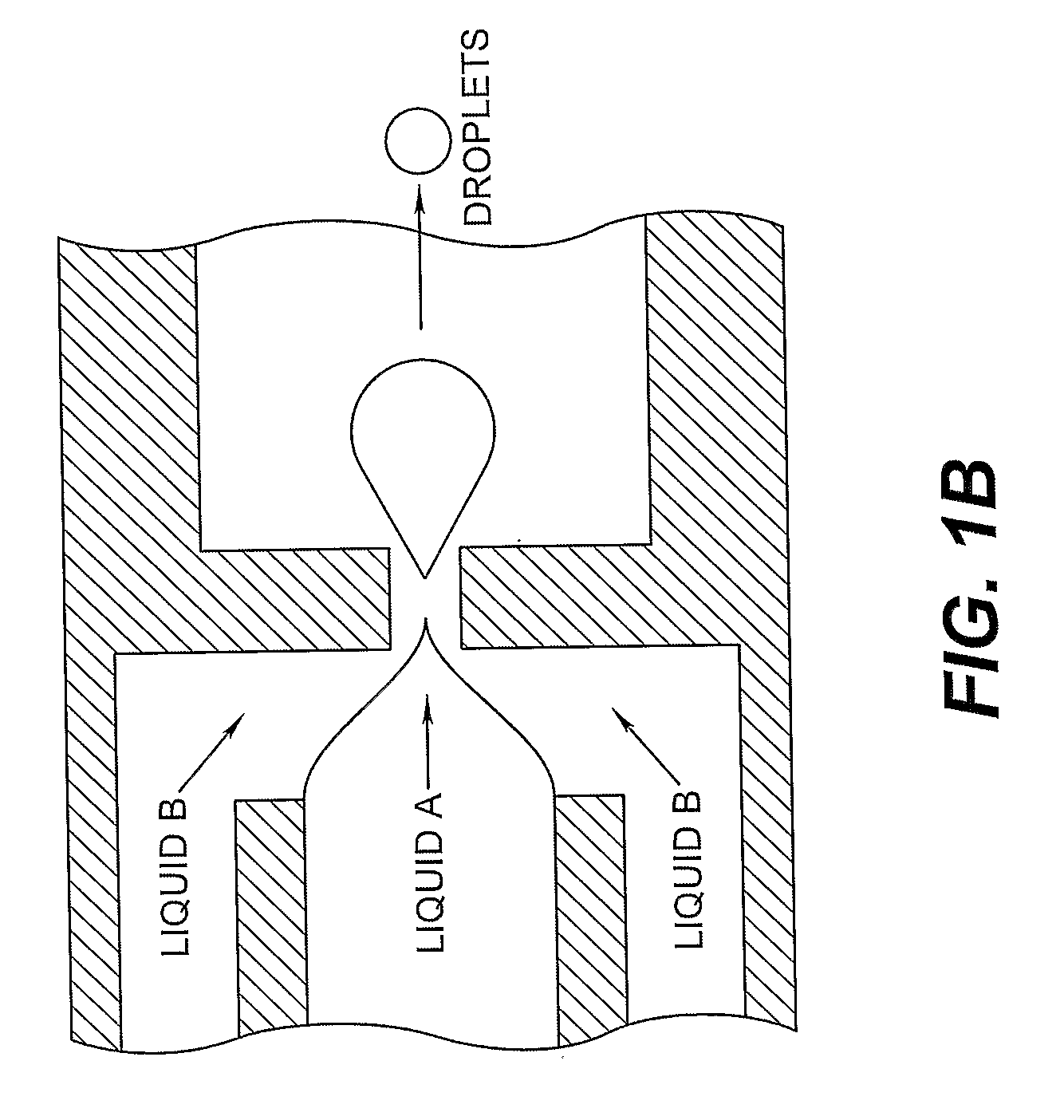Monodisperse droplet generation
a monodisperse droplet and droplet technology, applied in the field of multi-phase jet flow and microfluidics, can solve the problems of large size distribution of polydisperse droplets, unsuitable size distribution for many applications, and general unsuitability of polydisperse droplets for the formation of very small droplets, etc., to achieve the effect of higher speed and higher speed
- Summary
- Abstract
- Description
- Claims
- Application Information
AI Technical Summary
Benefits of technology
Problems solved by technology
Method used
Image
Examples
Embodiment Construction
[0038]The ability to form a fluid jet of a first fluid within an immiscible second fluid within a microfluidic device is known in the art. Devices capable of this operation are shown in FIGS. 1a and 1b. However, the modes of operation usual for these devices are either a “geometry controlled” or a “dripping” mode, where monodisperse drops of the first fluid are directly formed. These modes are explained in S. L. Anna, H C. Mayer, Phys. Fluids 18, 121512 (2006). However, it is also well understood that as the fluid flow velocity increases the first fluid passes the orifice responsible for the “geometry controlled” or “dripping” modes and forms a jet in the area beyond. This jet then breaks up into droplets controlled predominantly by interfacial or surface tension. This jet break up mode is termed the Rayleigh-Plateau instability and produces polydisperse droplets of the first fluid.
[0039]It is a remarkable and hitherto unknown fact that the break up of a jet of a first fluid within ...
PUM
| Property | Measurement | Unit |
|---|---|---|
| Reynolds numbers | aaaaa | aaaaa |
| Reynolds numbers | aaaaa | aaaaa |
| velocities | aaaaa | aaaaa |
Abstract
Description
Claims
Application Information
 Login to View More
Login to View More - R&D
- Intellectual Property
- Life Sciences
- Materials
- Tech Scout
- Unparalleled Data Quality
- Higher Quality Content
- 60% Fewer Hallucinations
Browse by: Latest US Patents, China's latest patents, Technical Efficacy Thesaurus, Application Domain, Technology Topic, Popular Technical Reports.
© 2025 PatSnap. All rights reserved.Legal|Privacy policy|Modern Slavery Act Transparency Statement|Sitemap|About US| Contact US: help@patsnap.com



